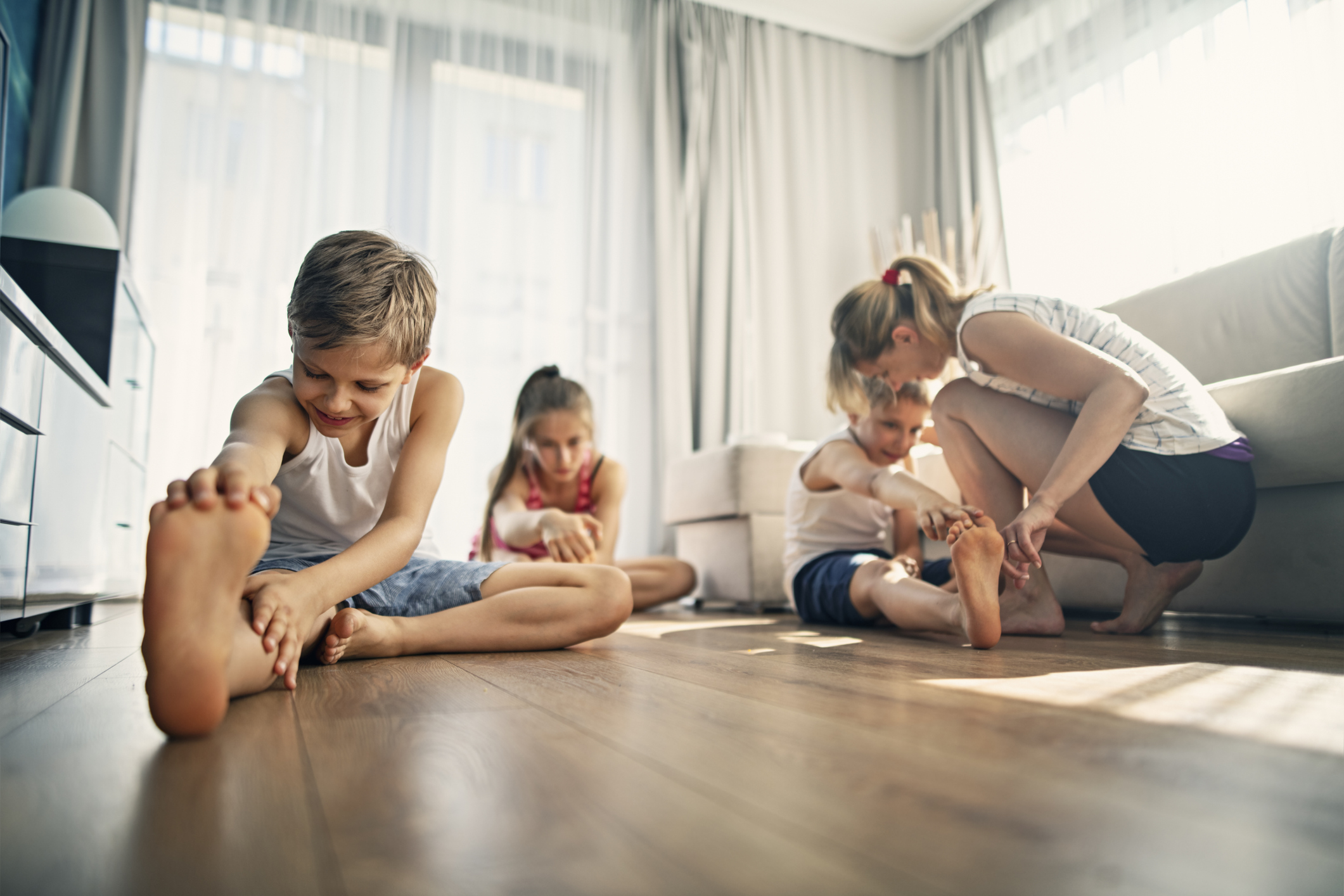
COVID-19 continues to confine families to their home with children struggling to fill the void left by regular physical activity in a team environment but parents can take steps to ensure regular exercise continues.
With local parks and playgrounds banned for public use, parents face a unique challenge in how they assist children’s sporting progress within the confines of a small backyard or apartments in Sydney and Melbourne.
Associate Professor Shane Pill says social distancing imposed to combat COVID-19 has created unique circumstances which require parents to encourage and maintain their children’s physical activity levels and sporting skills at home, instead of at sporting clubs or school PE lessons.
“There are many ways to encourage young children’s movement development at home. Obstacle courses using cushions, chairs, pillows, blankets, plastic bottles, and boxes, ladders placed on the ground can be explored through various locomotor skills: hopping, jumping, rolling, skipping.”
“Rolled up socks thrown into laundry baskets to develop throwing skills. Trampolines turned on their sides to create targets to kick at, bowl at, throw at. If you don’t have rackets, a couple of plastic plates taped to sticks or rulers can be used to play balloon badminton in the lounge room.”
https://www.facebook.com/1534900570147240/posts/2348108422159780/

For specific skill development, Associate Professor Pill says YouTube is loaded with practice ideas for the backyard and driveway, and there are websites and blogs such as ’10 football training drills to improve your child’s skills at home’ that can be explored.
“The encouragement of children and youth’s physical activity accumulation and continued movement development remains important if not vital for physical, social, emotional and cognitive development at this time.”
Driveway or backyard games can provide physical education suitable for online PE teaching and learning, as described uin in the Journal of Physical Education, Recreation & Dance recently.
“For example, the Driveway Tennis model – provide the principal of play to frame the question to get players thinking about their play, and provide a menu of primary and secondary rules to shape the game and through which the game can be developed for the environment in which it will be played.”
The Canadian 24-hour Movement Guidelines is also useful tool for integrating physical activity, sedentary behaviour and sleep in an ideal movement orientated day.
“Teachers and parents can create a daily monitor of how young people at home are spending their time by charting time in the Sweat, Step, Sleep and Sit categories and compare time use against the ideal day.”
Associate Professor Pill says Maths and PE can be integrated for meaningful learning in both subjects at home.
“One teacher I follow on Twitter developed an online platform with lots of images of things the children might have at home (teddy bear, a bucket, a football etc) for her Year 1/2 class, and when students clicked on the image of an item they have at home, there is a video explaining an activity they can do.”

